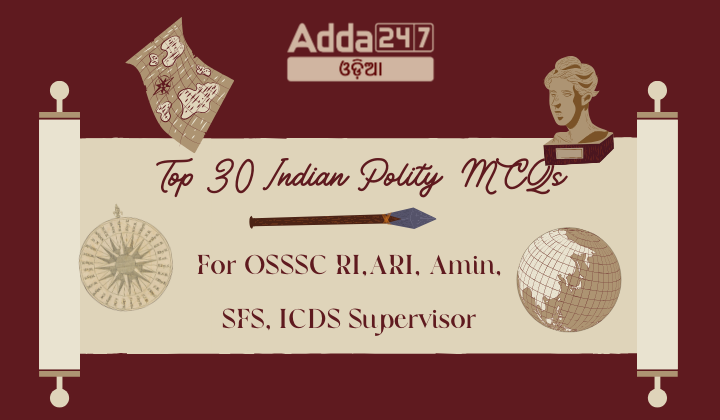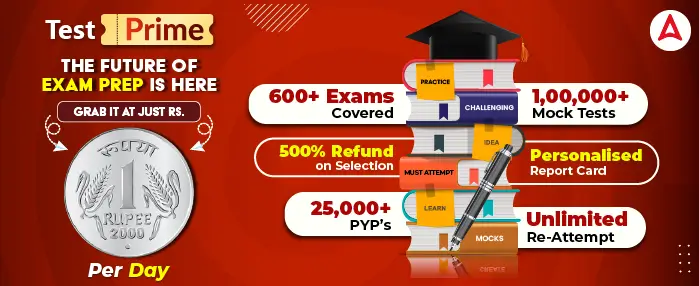Indian Polity is a crucial section for competitive exams like OSSSC RI, ARI, Amin, SFS, and ICDS, where a solid understanding of the Indian Constitution, political institutions, and fundamental principles of governance is tested. Top MCQs often cover essential topics such as the features and significance of the Preamble, the fundamental rights and duties of citizens, and the Directive Principles of State Policy. Questions might delve into the structure and functioning of the Parliament, including the roles of the Lok Sabha and Rajya Sabha, the process of law-making, and the nuances of parliamentary procedures.
Top 30 Indian Polity MCQs for OSSSC RI,ARI, Amin, SFS, ICDS Supervisor
- Which feature of the Indian Constitution is described as being the “lengthiest written constitution in the world”?
(a) Shortest written constitution
(b) Unwritten constitution
(c) Lengthiest written constitution
(d) Partly written constitution
Ans: (c) Lengthiest written constitution - The Indian Constitution has drawn provisions from various sources. Which country’s constitution influenced the Indian Parliament’s system of government?
(a) American Constitution
(b) British Constitution
(c) Canadian Constitution
(d) Irish Constitution
Ans: (b) British Constitution - Which term best describes the Indian Constitution’s nature as a combination of rigidity and flexibility?
(a) Rigid
(b) Flexible
(c) Rigid with a unitary bias
(d) Blend of rigidity and flexibility
Ans: (d) Blend of rigidity and flexibility - The Indian Constitution is federal in form but unitary in spirit. Who made this statement?
(a) B. R. Ambedkar
(b) K. C. Wheare
(c) Jawaharlal Nehru
(d) M. N. Roy
Ans: (b) K. C. Wheare - What kind of government system does the Indian Constitution adopt at both the Center and the States?
(a) Presidential System
(b) Federal System
(c) Parliamentary System
(d) Unitary System
Ans: (c) Parliamentary System - Which part of the Indian Constitution outlines the Fundamental Rights of citizens?
(a) Part I
(b) Part II
(c) Part III
(d) Part IV
Ans: (c) Part III - What is the main purpose of the Directive Principles of State Policy mentioned in the Indian Constitution?
(a) Ensure political justice
(b) Ensure social and economic justice
(c) Establish religious laws
(d) Define the structure of the government
Ans: (b) Ensure social and economic justice - In which year were the Fundamental Duties added to the Indian Constitution?
(a) 1947
(b) 1950
(c) 1976
(d) 2002
Ans: (c) 1976 - What principle does Indian Secularism embody according to the Indian Constitution?
(a) Preference to one religion
(b) Suppression of all religions
(c) Equal treatment of all religions
(d) Government-led religious activities
Ans: (c) Equal treatment of all religions - Which Constitutional Amendment Acts introduced the third tier of governance in the Indian Constitution?
(a) 42nd and 44th Amendments
(b) 61st and 73rd Amendments
(c) 73rd and 74th Amendments
(d) 86th and 97th Amendments
Ans: (c) 73rd and 74th Amendments - What does the Preamble to the Indian Constitution primarily provide?
a) A summary of the Constitution’s provisions
b) An introduction outlining the philosophy and objectives
c) A list of fundamental rights
d) The detailed structure of the government
Answer: b) An introduction outlining the philosophy and objectives - According to the Preamble, what is the source of authority of the Indian Constitution?
a) The Parliament
b) The Supreme Court
c) The President of India
d) The People of India
Answer: d) The People of India - Which term was added to the Preamble by the 42nd Amendment Act of 1976?
a) Sovereign
b) Socialist
c) Republic
d) Democratic
Answer: b) Socialist - When was the Preamble to the Indian Constitution adopted?
a) January 26, 1950
b) November 26, 1949
c) January 22, 1947
d) July 4, 1947
Answer: b) November 26, 1949 - What does the term ‘Secular’ in the Preamble signify?
a) India respects only one religion
b) All religions are equally respected and protected by the state
c) The state follows a specific religion
d) The government does not intervene in religious matters
Answer: b) All religions are equally respected and protected by the state - In which case did the Supreme Court first recognize the Preamble as part of the Constitution?
a) Berubari Case
b) Kesavananda Bharati Case
c) Golaknath Case
d) Minerva Mills Case
Answer: b) Kesavananda Bharati Case - What was the primary objective of including the term ‘Socialist’ in the Preamble?
a) To promote private sector dominance
b) To achieve socialist goals through democratic means
c) To ensure only public sector dominance
d) To eliminate all private enterprises
Answer: b) To achieve socialist goals through democratic means - Which objective is NOT explicitly mentioned in the Preamble?
a) Justice
b) Liberty
c) Fraternity
d) Economic Development
Answer: d) Economic Development - How does the Preamble describe the nature of the Indian state?
a) Authoritarian and centralized
b) Federal and hierarchical
c) Sovereign, Socialist, Secular, and Democratic Republic
d) Imperial and monarchical
Answer: c) Sovereign, Socialist, Secular, and Democratic Republic - What is the significance of the term ‘Republic’ in the Preamble?
a) The state is governed by a monarch
b) The head of state is elected by the people
c) The head of state is appointed by the Parliament
d) The state follows a theocratic system
Answer: b) The head of state is elected by the people - What was the central contention of the Supreme Court in the Shankari Prasad case (1951)?
(a) The Parliament’s power of amending the Constitution does not extend to Fundamental Rights.
(b) The Parliament’s power to amend the Constitution under Article 368 includes the power to amend Fundamental Rights.
(c) The Constitution cannot be amended by the Parliament.
(d) Fundamental Rights are immune to any form of constitutional amendment.
Answer: (b) The Parliament’s power to amend the Constitution under Article 368 includes the power to amend Fundamental Rights. - What was the significant dissenting opinion in the Sajjan Singh case (1965)?
(a) Fundamental Rights could be amended if deemed necessary by the Parliament.
(b) The Parliament can amend any part of the Constitution including Fundamental Rights.
(c) Fundamental Rights should not be subject to amendment as they are essential for democracy.
(d) The Parliament’s amending power is unlimited and cannot be restricted by the judiciary.
Answer: (c) Fundamental Rights should not be subject to amendment as they are essential for democracy. - What was the main outcome of the Golaknath case (1967)?
(a) Fundamental Rights could be amended by the Parliament.
(b) Fundamental Rights are transcendental and cannot be amended by Parliament.
(c) Article 368 gives the power to Parliament to amend the Constitution completely.
(d) The Constitution should be rewritten to include Fundamental Rights.
Answer: (b) Fundamental Rights are transcendental and cannot be amended by Parliament. - What did the Kesavananda Bharati case (1973) establish about the basic structure doctrine?
(a) The Parliament can rewrite the Constitution if necessary.
(b) No part of the Constitution, including Fundamental Rights, is beyond Parliament’s amending power.
(c) The basic structure of the Constitution cannot be abrogated even by a constitutional amendment.
(d) The judiciary has no role in scrutinizing constitutional amendments.
Answer: (c) The basic structure of the Constitution cannot be abrogated even by a constitutional amendment. - In the Indira Nehru Gandhi v. Raj Narain case (1975), why was Clause (4) of Article 329-A struck down?
(a) It was contrary to the principles of federalism.
(b) It was beyond Parliament’s amending power as it destroyed the basic features of the Constitution.
(c) It violated the principle of separation of powers.
(d) It was inconsistent with the Directive Principles of State Policy.
Answer: (b) It was beyond Parliament’s amending power as it destroyed the basic features of the Constitution. - What were the two features added to the basic structure doctrine in the Minerva Mills case (1980)?
(a) Judicial review and balance between Fundamental Rights and Directive Principles of State Policy (DPSP).
(b) Federal structure and secularism.
(c) Separation of powers and sovereignty.
(d) Democracy and equality.
Answer: (a) Judicial review and balance between Fundamental Rights and Directive Principles of State Policy (DPSP). - What did the Waman Rao case (1981) clarify regarding amendments to the 9th Schedule?
(a) All amendments to the 9th Schedule are invalid.
(b) Amendments to the 9th Schedule are valid only if they do not conflict with the basic structure doctrine.
(c) Amendments to the 9th Schedule made before April 24, 1973, are valid, while those made after that date are subject to scrutiny.
(d) The 9th Schedule amendments are entirely immune to judicial review.
Answer: (c) Amendments to the 9th Schedule made before April 24, 1973, are valid, while those made after that date are subject to scrutiny. - What did the Indra Sawhney v. Union of India case (1992) add to the basic structure doctrine?
(a) The principle of equal protection under the law.
(b) The rule of law.
(c) The need for periodic review of reservations.
(d) The importance of economic equality.
Answer: (b) The rule of law. - In the S.R. Bommai case (1994), what was emphasized about the misuse of Article 356?
(a) Article 356 can be used for any purpose as deemed necessary by the central government.
(b) The misuse of Article 356 can be checked if it is directed against an element of the basic structure of the Constitution.
(c) Article 356 is not subject to judicial review.
(d) State policies violating basic structure are not a valid ground for invoking Article 356.
Answer: (b) The misuse of Article 356 can be checked if it is directed against an element of the basic structure of the Constitution. - Which case established that Parliament can only amend, but not destroy, the Constitution?
(a) Shankari Prasad case.
(b) Golaknath case.
(c) Kesavananda Bharati case.
(d) Minerva Mills case.
Answer: (c) Kesavananda Bharati case.










